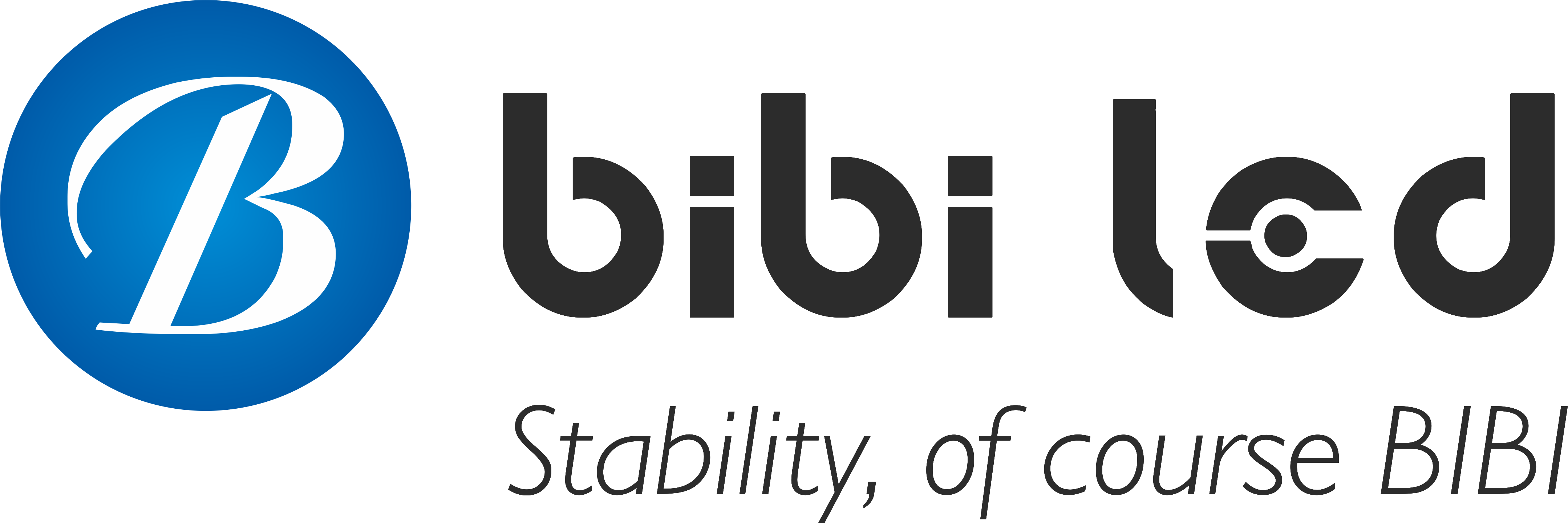소개
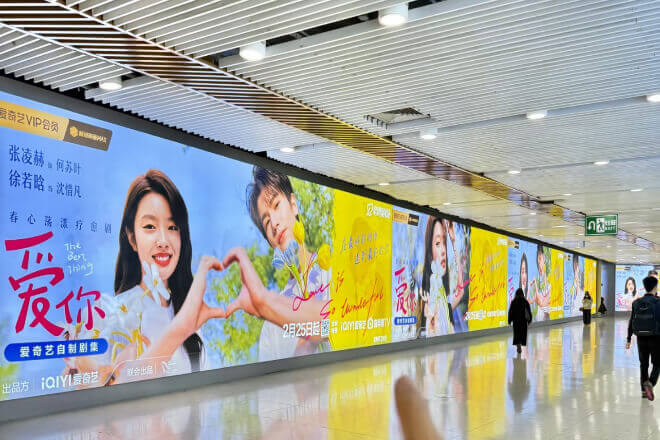
Subway advertising is no longer simply paper posters and billboards. The addition of LED 스크린 makes it more vivid and engaging.
As a densely populated area, subways have long been a battleground for advertisers, and LED screens are undoubtedly the most attractive “stars.”
Today, let’s discuss why LED screens are an ideal choice for subway advertising and see how they can bring a whole new level of communication effectiveness to advertising on this fast-paced railroad.
목차
1. What are the reasons why LED screens are suitable for subway advertising?
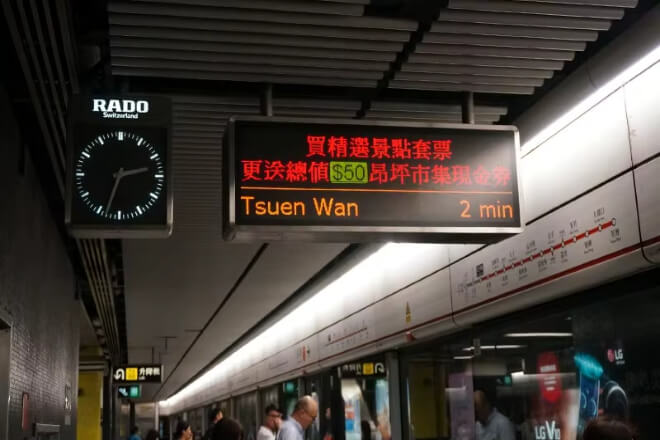
Subway advertising has become an indispensable part of modern cities, and LED screens are the “stars” of this advertising ecosystem.
With the growth of urban populations, subways have become a primary mode of daily commuting. LED screens, with their efficiency and flexibility, perfectly meet the needs of subway advertising.
Let’s discuss why LED screens are so suitable for subway advertising.
1) High passenger flow and high exposure
One of the subway’s greatest advantages is its high passenger volume, with thousands of passengers traveling through the trains every day.
LED screens can provide huge exposure for ads in this high-frequency environment.
Whether it’s the morning or evening rush hour, LED advertising screens deliver promotional and brand information to every passing passenger.
Imagine millions of passengers seeing your ad day and night—that’s a tremendous amount of exposure!
2) More concentrated reach in enclosed spaces
The subway is a relatively enclosed space, where passengers typically don’t move around much, and most stay quietly in their seats. This prevents ads from being distracted by other environmental factors.
Compared to street advertising, subway LED advertising screens can capture customers’ attention more effectively.
Because the information isn’t blown away by strong winds or overshadowed by other ads, passengers can better see the content, naturally resulting in higher view rates.
3) Strong visual impact
Most daily commuters have their own priorities, whether they’re preoccupied with work or glued to their phones, and often don’t pay attention to static ads.
However, LED screens can display vivid, eye-catching, dynamic ads. Animated images, short videos, and vibrant colors instantly capture commuters’ attention.
Their powerful visual impact not only breaks down passengers’ attention spans but also increases their memorability.
For example, a pet products ad featuring a cute dog in just a few seconds can stop people in their tracks.
4) Programmable and Intelligent Control
Another highlight of LED screens is their flexibility. They can adjust content based on the time of day.
This means you can tailor advertising to suit varying passenger flow, such as rush hour, lunch break, and the end of the workday.
During the day, you can play work-related ads, while at night you can switch to food and entertainment content, ensuring your ads consistently target the right audience.
The intelligent nature of LED screens allows for faster content updates, maximizing advertising effectiveness.
2. Main Applications of LED Screens in Subway Advertising
Subway advertising is no longer just simple paper posters; LED screens are a shining example!
From dazzling large screens that stop you in your tracks to fine-pitch displays within train cars, LED advertising makes subway advertising more engaging.
Not only does it deliver a strong visual impact, but it also provides opportunities for interaction. So, just how cool are the applications of LED screens in subway advertising? Let’s take a look!
1) LED Screens in Station Halls and Passageways
Subway station halls and passageways are essential transit points for passengers, and LED screens are undoubtedly the most eye-catching “advertising stars.”
You can’t miss these creative and colorful ads—they grab your attention the moment you pass by.
Whether playing city image films or displaying brand advertisements, LED screens have become the dominant form of subway advertising.
This advertising format is ideal for brands that want to be “unmissable.” Dazzling content can break through commuter fatigue and capture passengers’ interest.
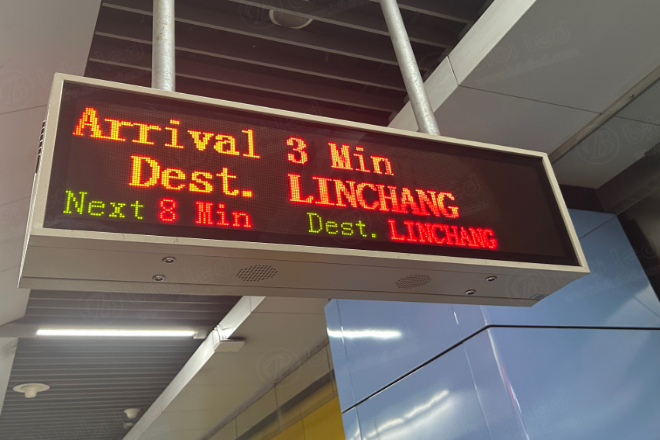
2) LED Screen Walls in Station Waiting Platforms
The LED screen wall in a station waiting platform is truly a “stage” for advertising! By splicing multiple LED screens, the entire station waiting platform is filled with visual advertising, creating a super cool visual belt.
Passengers standing on the platform can almost feel the rhythm of the advertising content, as if they have entered an immersive advertising space.
For example, during festive occasions, you could use this type of screen wall to showcase your brand story or city culture, giving every passenger an immersive experience.
3) LED Column Screens
LED column screens, strategically placed on subway station pillars or corners, are a “secret weapon” for targeted marketing.
Despite their compact size, they effectively convey advertising messages, don’t take up too much space, and yet capture customers’ attention precisely.
For example, in a pet store ad, an LED column screen could display a “buy one, get one free” promotion.
This not only captures customers’ attention during busy commutes but also allows them to easily see the most relevant promotional content.
4) Interactive Ceiling and Floor Screens
Want to make your advertising more engaging and encourage passenger interaction? Try interactive LED screens on the ceiling and floor!
These screens aren’t just for displaying static ads; they can react to passengers’ movements, increasing engagement.
For example, when you walk across a subway station’s ground-level LED screen, the ads or animations on the screen move with you, giving you a magical visual experience.
This unique interactive experience takes advertising beyond simply “seeing” to “participating.” Passengers not only see the ads, but also become part of them.
5) Small-pitch LED screens on trains
Small-pitch LED screens on trains are the “mobile assistants” of subway advertising. They can display a variety of advertising content, brand promotions, and even real-time news and weather information.
As passengers pass the time on the train, LED advertising screens become a vital source of information.
Imagine being able to not only see the latest pet grooming deals on the subway, but also get the weather and news headlines in just a few minutes, enhancing the diversity of advertising content.
3. How do LED screens enhance the effectiveness of subway advertising?
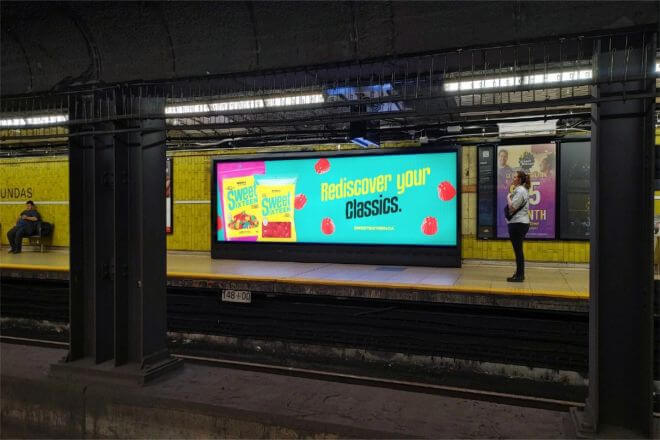
Who can resist the allure of dynamic advertising? Compared to static posters and billboards, the dynamic images of LED screens are truly eye-catching.
Vivid video advertising content is more memorable than static images. Especially during rush hour.
When everyone is busy checking their phones, LED advertising screens’ vibrant colors and dynamic effects easily catch passengers’ attention and can even help them remember brand messages in just seconds.
For example, playing short clips or dynamic pet videos instantly captures the attention of anxious commuters, enhancing their memorability and allowing them to remember the “cute kitten” and the brand behind it even after they get off the bus.
One of the greatest advantages of LED advertising screens is the flexibility to adjust content based on the time of day.
During the morning rush hour, you can display coffee shop morning discounts or healthy breakfast ads.
During the midday or evening rush hour, you can display leisure and entertainment-related ads or dinner promotions.
By switching advertising content based on passenger volume and time of day, you can more precisely target the right audience.
For example, advertisers can push fitness-related ads during lunch and dinner promotions in the evening, ensuring that the advertising message perfectly matches passenger needs.
LED advertising screens not only display ads; they also serve as information streaming platforms.
It supports real-time information updates, such as weather forecasts, news headlines, and public transportation tips.
This allows passengers to not only see brand advertising but also receive timely and useful information, breaking the limitations of traditional advertising screens that only provide advertising content.
For example, LED screens can display ongoing promotions while also updating weather forecasts or traffic conditions.
While passengers are waiting for their bus, advertising content and practical information can be presented simultaneously, allowing them to receive more comprehensive information in just a few minutes.
LED advertising screens are no longer simply about “looking”; they have become more interactive and engaging.
Through features like QR code scanning and AR interaction, advertising goes beyond simply conveying information and allows viewers to participate.
For example, by incorporating a QR code scan function into advertising content, passengers can scan a QR code to receive discounts on pet supplies or participate in promotions.
Highly interactive advertising not only makes the information more engaging but also creates a sense of engagement and interest among customers.
Imagine seeing an interactive mini-game featuring an AR pet in an ad, where passengers can not only participate but also win small prizes.
This interactive advertising will undoubtedly deepen passengers’ memory and positive impression of the brand.
Finally, LED advertising screens not only enhance advertising effectiveness but also give the entire subway space a more modern and technological feel.
Through their high-tech display, LED screens not only attract passengers’ attention but also enhance the premium image of the advertised brand.
They add a digital and intelligent atmosphere to the subway environment, in line with the fashion trends of modern cities.
For example, seeing a cool LED screen playing smooth advertising content on a subway platform will subtly convey a sense of modernity and innovation, and such advertising will invisibly elevate the brand’s status.
4. The Commercial Value of Investing in LED Display Screens for Subway Advertising
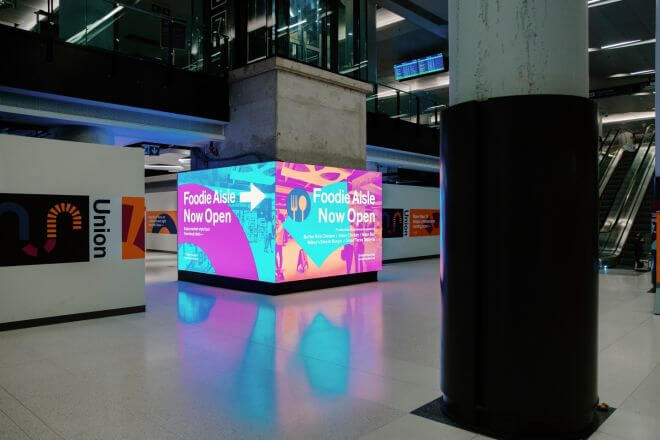
1) Improving Advertising Efficiency and Revenue
A key advantage of LED screens is “multi-purpose use.” Through a dynamic content carousel, advertisers can display multiple ads on the same screen, even running different ads at the same time.
This efficient resource utilization allows advertisers to maximize content display within limited ad space, improving delivery efficiency.
For example, subway station LED screens could display coffee and breakfast ads during the morning rush hour and leisure and entertainment ads in the evening.
Advertisers can switch content through simple time slots, ensuring they reach different target audiences during each time slot, thereby increasing overall advertising revenue.
2) Supporting Differentiated Brand Communication
Compared to static ads, the dynamic images on LED screens can more vividly showcase brand stories and advertising content.
Dynamic images and creative short videos are more likely to spark discussion among passengers and create buzz.
This feature of LED advertising screens allows brands to differentiate themselves, stand out from the crowd, and attract more attention.
For example, some brands might choose to use LED screens to display fun pet videos or innovative interactive ads.
Such creative advertising not only attracts the attention of subway passengers but also fosters further dissemination through social media, increasing brand exposure and influence.
3) Enabling Big Data-Based Targeted Delivery
The digital nature of LED advertising screens enables them to be integrated with big data technology for targeted delivery.
Subway operators can optimize advertising content based on data such as passenger flow, demographics, and geographic location at different times of day.
For example, during rush hour, LED screens can promote commuting-related ads, such as coffee, fast food, and transportation, while during off-peak hours, more ads for leisure, entertainment, and shopping can be displayed.
This precise delivery, based on big data analysis, not only improves ad relevance and audience acceptance but also optimizes advertising effectiveness and increases advertisers’ return on investment.
4) Extending the Advertising Lifecycle
Traditional subway advertising requires frequent replacement of posters, advertising light boxes, and other materials, which not only increases costs but also wastes significant time.
LED screens avoid this problem. They can quickly update advertising content through remote control, reducing the need for frequent material replacement and extending the advertising lifecycle.
Advertisers only need to invest once to enjoy sustained advertising results over time.
Furthermore, LED screens are durable and require no frequent maintenance, saving advertisers material and maintenance costs and reducing long-term advertising expenses.
5) Attracting More Brands to Advertise
With the promotion of LED screens and the improvement of advertising effectiveness, more and more brands are beginning to appreciate the investment value of subway advertising.
This has made subway advertising resources even more scarce, attracting more advertisers.
For subway operators, LED screens not only improve advertising effectiveness for existing clients but also attract more brands to their advertising resources, thereby generating additional revenue streams.
For example, both well-known brands and local businesses are willing to place advertisements on LED screens, especially in high-visibility subway stations and train cars.
As advertising effectiveness gradually becomes apparent, the value of subway advertising resources has greatly increased, attracting more major brands.
5. Key Technical and Design Considerations for LED Displays in Subway Environments
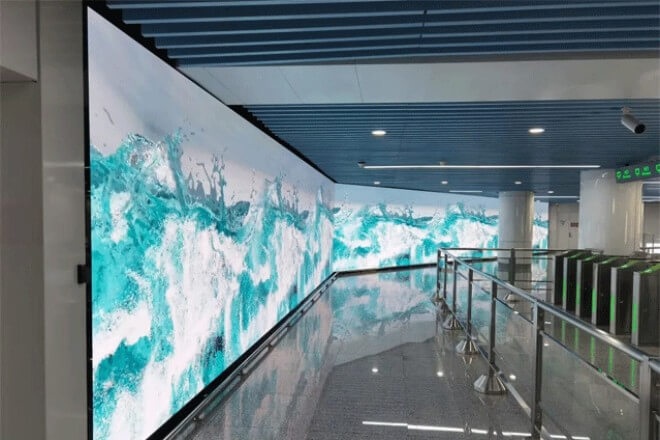
Subway advertising has become an integral part of urban advertising, and LED displays are key to enhancing advertising effectiveness.
Due to the unique environment of subways—enclosed spaces, dense crowds, and complex lighting conditions—the design and technical requirements for LED advertising screens must take these factors into account.
1) 명도 Control and Anti-Glare Design
In subway stations, where direct sunlight and strong artificial lighting are present, the brightness of LED advertising screens must be carefully considered.
Too bright can glare at passengers, while too dim can make the content difficult to read.
Therefore, LED screen brightness must be intelligently adjusted to ensure clear visibility both day and night while avoiding visual discomfort.
Anti-glare design is also crucial, reducing screen reflections and making it more comfortable for passengers to view ads on the platform or in the train.
Imagine if the screen is too bright and there’s a reflective area on the platform, passengers will unconsciously squint, immediately diminishing the effectiveness of the ad. Moderate brightness and an anti-glare design address this issue.
2) Dust, Moisture, and Shockproof Performance
The subway environment is relatively complex, and dust, moisture, and vibration can all affect the performance of LED screens.
To meet these challenges, LED displays must be highly resistant to dust, moisture, and shock.
For example, the screen casing must meet an IP65 waterproof and dustproof rating to ensure stable operation even in the humid subway environment.
The shockproof design ensures that the screen can display content stably even when subway vehicles are in motion or passengers are moving.
These protective measures ensure the long-term operation of the advertising screens, reduce malfunctions caused by environmental factors, and avoid the need for constant repairs.
3) Energy-Saving Systems and Automatic Temperature Control Technology
Subway LED advertising screens must not only display content but also maintain low energy consumption.
Energy-saving systems and automatic temperature control technologies ensure that the screens can operate 24/7 without consuming excessive power or overheating due to prolonged operation.
The intelligent temperature control system automatically adjusts the heat dissipation of the LED screens based on the subway station’s temperature, preventing damage caused by overheating and extending their service life.
This is like an air conditioner in your home, automatically adjusting the temperature to save energy while maintaining optimal performance.
This energy savings also reduces operating costs for subway operators, reduces energy waste, and aligns with the concept of a green city.
4) Reliability of the playback system
Subway advertising screens need to operate for extended periods, requiring an extremely reliable playback system.
Advertisers don’t want their screens to experience sudden disconnections or lags during peak hours.
To ensure stable operation, LED advertising screens are often equipped with backup systems and remotely monitored to ensure 24/7 uninterrupted advertising content playback.
This is like a non-stop advertising “production line,” providing stable playback day and night, ensuring continuous ad exposure.
For advertisers, system reliability is crucial; ensuring smooth ad display is fundamental to maximizing return on investment.
5) Screen size and 해결 planning
Finally, the screen size and resolution must be tailored to the specific conditions of the subway station.
Platforms and train cars have different sizes, so the screen size must be tailored accordingly.
Large stations can choose larger LED screens, while smaller stations can adopt more compact designs.
The resolution needs to be adjusted based on passengers’ viewing distance, ensuring that advertising content remains clearly visible even from a distance.
A reasonable size and resolution not only enhances advertising effectiveness but also makes more efficient use of advertising space, preventing ads from appearing overcrowded or blurry.
6. 결론
In short, LED displays not only make subway advertising more engaging and flexible but also deliver precise advertising content, attracting significant attention and focus.
From dynamic graphics to real-time updates, they offer advertisers greater creative freedom and a more engaging advertising experience for passengers.
마지막으로 LED 디스플레이에 대한 자세한 내용은 우리에게 연락해주세요.
